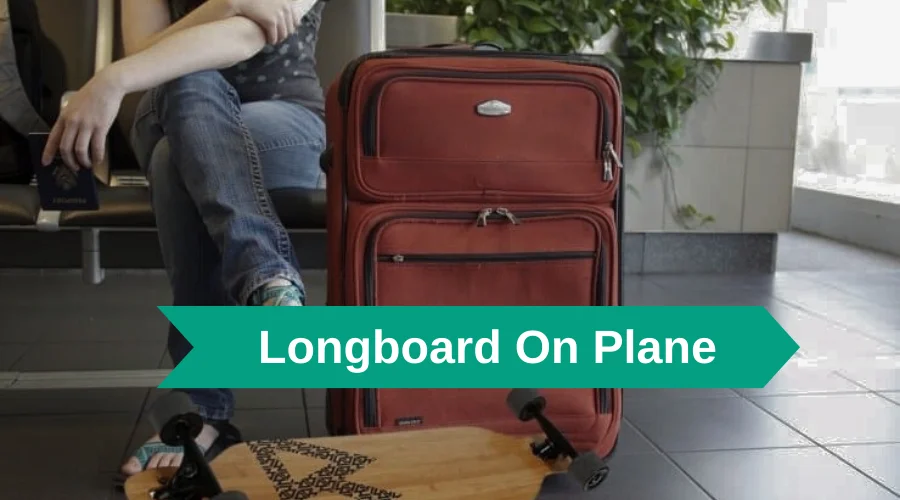Things To know before carrying longboard on plane
If you’re an avid longboarder, you are likely eager to take your board with you on your next trip. However, the thought of carrying it on a plane can be intimidating.
How do airlines handle oversized sports equipment like longboards? What are the limitations and fees involved in carrying a longboard on a plane?
In this guide, we’ll cover everything you need to know about carrying a longboard on a plane.
Airline Policies for Longboard Transportation
When it comes to traveling with your longboard on a plane, it’s essential to be aware of the airline’s policies on transportation.
Some airlines permit longboards as carry-on luggage or regular checked baggage, while others do not allow longboards at all or require them to be shipped separately.
It’s crucial to check with the specific airline you’ll be flying with to determine their exact policies on longboard transportation, including size and weight limitations, fees, and required documentation.
By doing so, you can ensure a hassle-free and stress-free travel experience with your beloved longboard securely by your side.
Carry-On vs. Checked Luggage: Pros and Cons
When it comes to packing for a trip with a longboard, travelers will need to consider whether to carry it on or check it in. Both options have their pros and cons, which can affect travel costs, convenience, and wait times.
Carry-on luggage offers the benefit of not having to wait for luggage retrieval, and there are typically no extra fees. However, there may be size and weight restrictions that could make it challenging to bring on board.
Checked luggage may be a better option if the longboard is too large or heavy for carry-on, but travelers should be aware of additional fees and the possibility of damage or misplacement.
Size and Weight Restrictions for Longboards
When it comes to traveling with a longboard, it’s important to be aware of the size and weight restrictions set by both airlines and the TSA.
Most airlines will allow longboards to be checked in as oversized baggage, but size limits and fees may vary. It’s important to measure your longboard and check with your specific airline to ensure it meets their requirements.
As for carry-on luggage, the TSA sets a maximum size restriction of 22 inches long, 14 inches wide, and 9 inches high.
Longboards are allowed but must be under the weight limit of 50 pounds.
To avoid any issues or extra fees, it’s recommended to properly package your longboard and take note of any specific airline policies.
Recommended Packaging Options for Longboards
When it comes to transporting your longboard on a plane, how it is packaged is crucial. Some airlines require that longboards be placed in a specific type of packaging to prevent damage during travel.
There are a few options for packaging longboards: using bubble wrap, padding, or a longboard-specific bag.
Bubble wrap can be an effective option to protect the board, but it can be messy and time-consuming to wrap the board correctly.
Padding can be a more convenient solution, as it can be easily wrapped around the board and secured with tape or other adhesives.
If you’re looking for a more specialized option, a longboard-specific bag is a great investment. These bags are designed to fit longboards snugly and often come with additional padding to ensure the board’s safety during transportation.
Regardless of the option you choose, make sure to securely fasten the packaging to prevent any shifting or damage during the flight.

TSA Regulations for Longboard Travel
When it comes to TSA regulations for longboard travel, there are a few things to keep in mind.
Firstly, longboards are considered sporting equipment, which means they should be carried as checked luggage. However, according to TSA regulations, you can pack a longboard in both your carry-on and checked bags, although airlines will have their own restrictions.
It’s important to check with your specific airline about their policies regarding longboards. You may also need to provide documentation or special packaging for your longboard to be transported.
Remember that longboards over 9ft aren’t accepted, and they must be packed properly or transported in a surfboard bag.
Longboard Transportation Fees and Charges
When it comes to taking longboards on a plane, there are additional fees and charges that travelers should keep in mind.
The exact fees for longboard transportation may vary depending on the airline, cabin class, and travel region. While some airlines offer free checked baggage allowance for longboards up to a certain size, others view longboards as non-standard baggage and may charge additional fees for their transportation.
In addition, some low-cost airlines require passengers to purchase overhead bin space for their longboards.
Recommended Airlines for Longboard Travel
Based on the factual data, some recommended airlines for longboard travel include American Airlines, Delta Airlines, and Southwest Airlines.
These airlines allow longboards as both carry-on and checked baggage, and have reasonable size and weight restrictions. Additionally, they do not charge exorbitant fees for longboard transportation.
Of course, it’s important to double-check with the specific airline before traveling to ensure that their policies have not changed.

I am a longboarding enthusiast and a blogger. On this blog, I share tips, tricks, and advice based on my experience. I am dedicated to helping newbies improve their skills and enjoy this fun activity to the fullest.
Disclosure:This post may contain affiliate links. If you click on a link and make a purchase, we may earn a commission at no additional cost to you. Learn more.







